
Building a guest house is one of the largest home projects and involves several different professionals. Learn about the cost to build a guest house and where you can save.
Discover which type of kitchen faucet fits your fancy


It’s no surprise that your kitchen faucet plays an essential role when it comes to cooking and cleaning. That’s why it’s essential to learn about the best types of kitchen faucets to ensure everything from meal preparation to chores runs smoothly.
Many types of kitchen faucets have a considerable lifespan of about 15 to 20 years, though it’s not uncommon for homeowners to replace their faucet before it reaches old age. Because of the impact that your kitchen faucet can have on your day-to-day life, it’s important to consider more than appearance when choosing a replacement. Here are 14 types of faucets and what they’re best for.
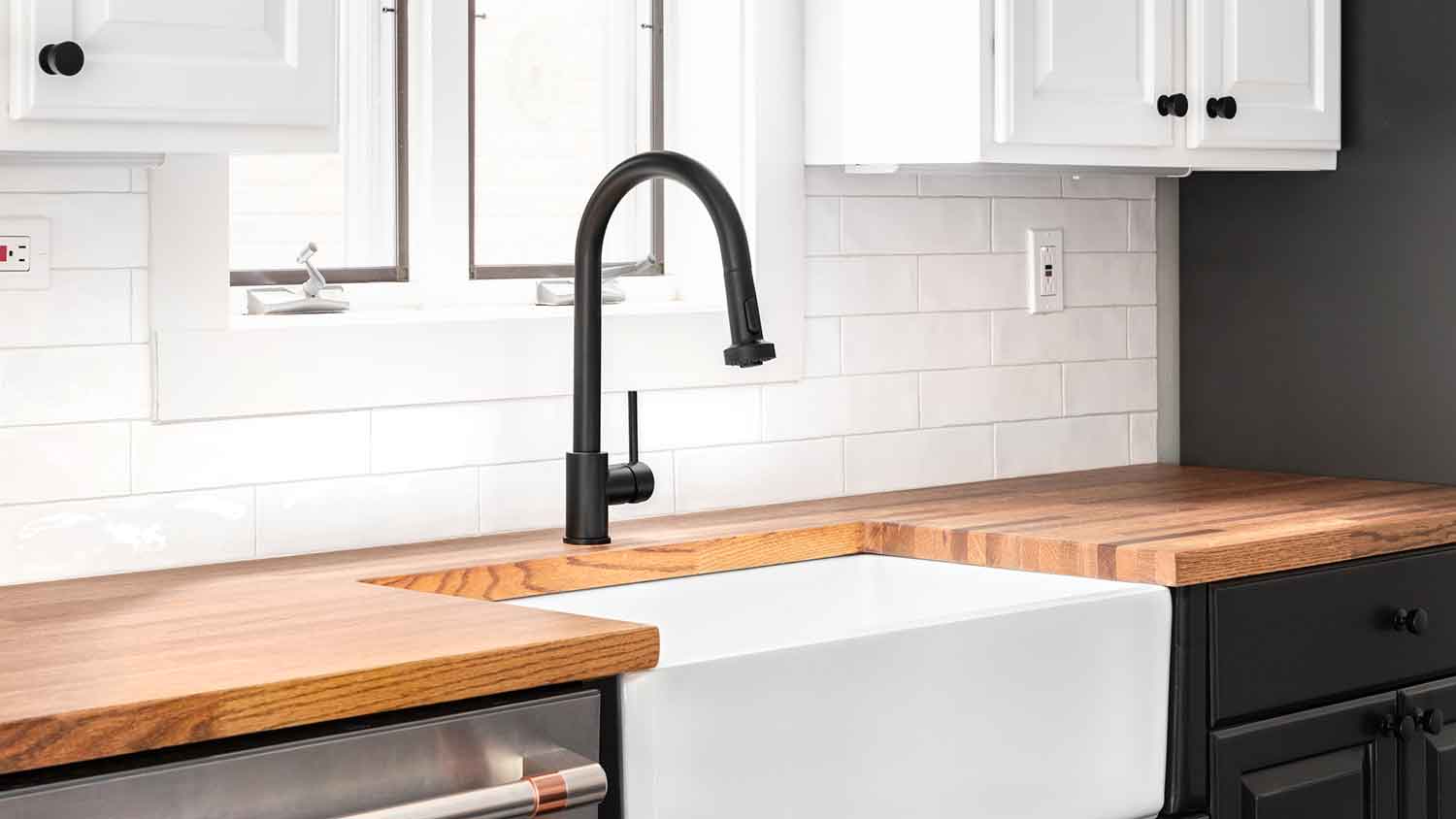
If you’re a homeowner who believes less is more, the single-handle faucet may be the right option for you. It’s the most fundamental type of kitchen faucet, offering one spout and one valve to adjust both the flow and temperature of the water.
Since single-handle faucets have minimal features, they’re often less fussy to cook or clean with. Plus, you can achieve an elegant appearance in the kitchen with a single-handle faucet that has a tall structure. The simplicity of this kitchen faucet type also makes it a viable option if you’re looking to replace your own kitchen faucet.
| Pros | Cons |
|---|---|
| Easy to use with one hand | Limited temperature control |
| Less cluttered appearance on the sink | Can be more expensive |
| Can provide a sleek and elegant look | May require complete replacement if handle malfunctions |
Best for: Modern and minimalist homes or avid DIYers.
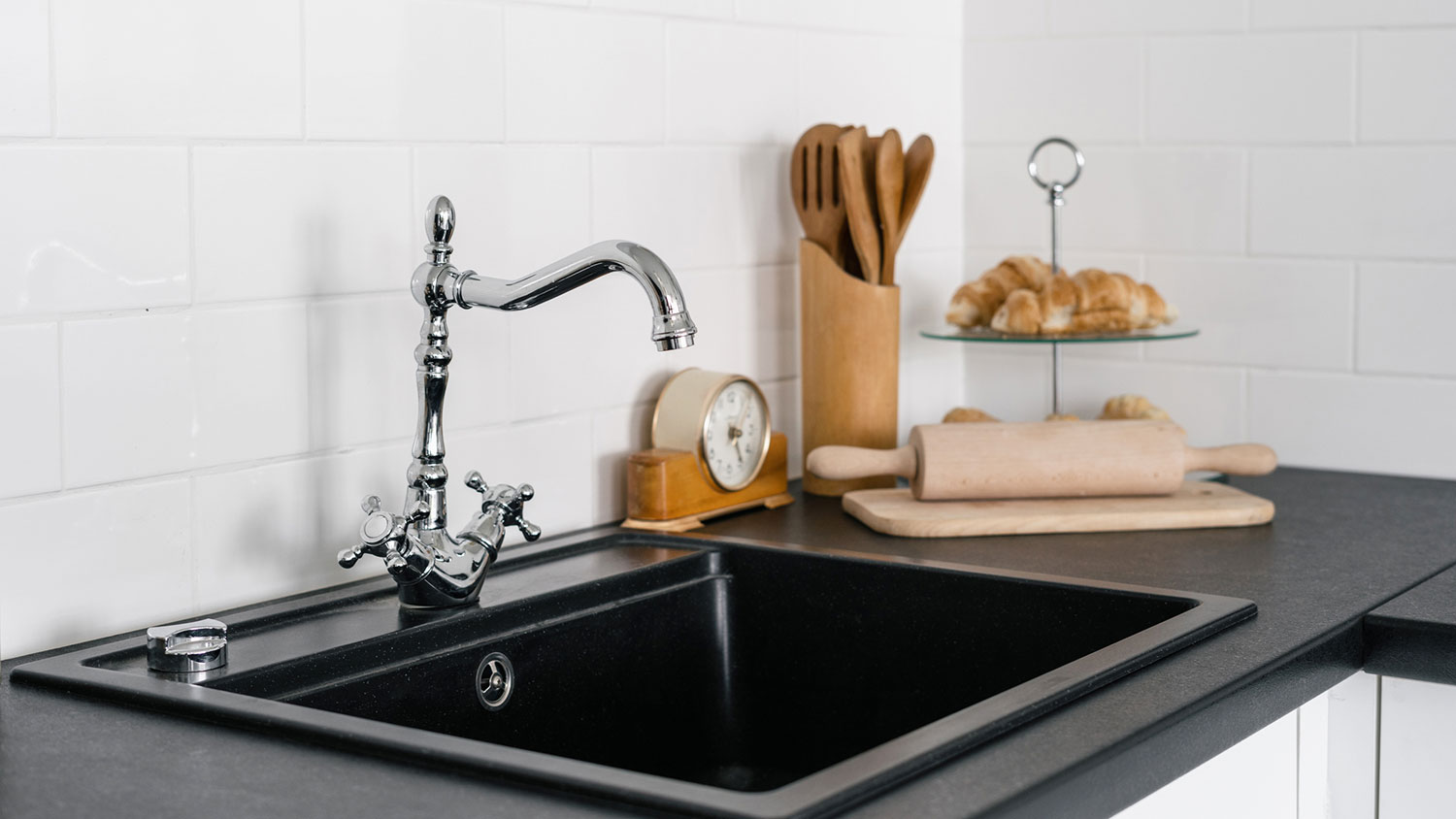
Another popular option for homeowners modifying their kitchen or bathroom faucet is the dual-handle faucet. With a dual-handle faucet, you manipulate the water’s temperature using the handles placed to the right and left of the neck; the right typically provides cold water, the left provides warm water.
While lever handles have become many homeowners’ primary choice for a dual-handle faucet, knob handles are an option for those looking to embody a more vintage aesthetic in the kitchen. It’s common for both handles to match the same metal as the faucet, though porcelain and glass are popular materials to make the two faucet handles stand out.
| Pros | Cons |
|---|---|
| Precise temperature control | More potential for leaks or dripping |
| Wide variety of handle styles | May be harder to clean around handles |
Best for: Homeowners who want more temperature control.
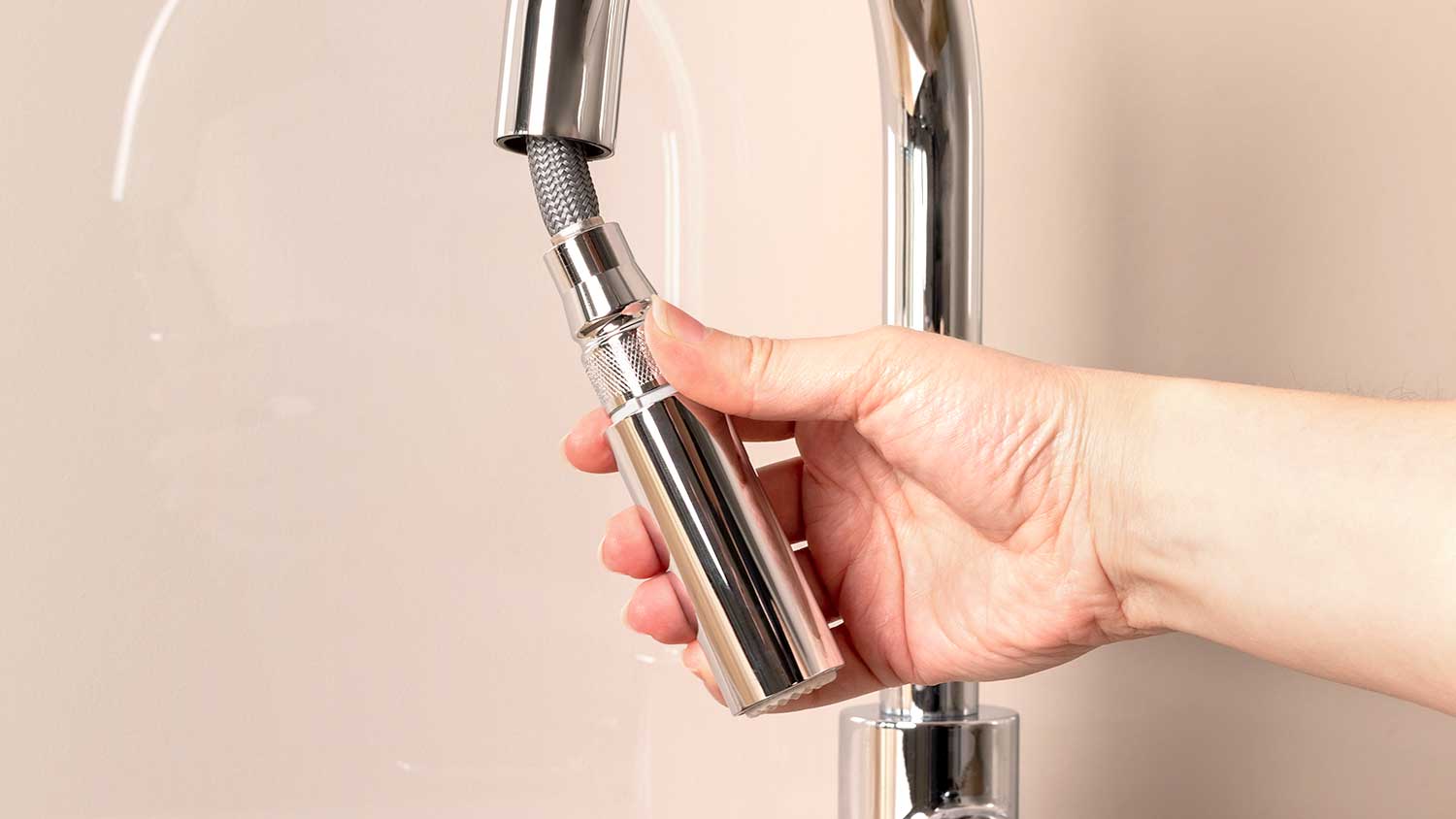
When you need more flexibility in the kitchen, a pull-out faucet is a great option. Pull-out faucets feature a detachable nozzle head, allowing water to reach a greater range. Most pull-out faucet nozzles offer a spray or flow option to cater to the variety of kitchen needs any homeowner may have.
Regarding handles, pull-out faucets typically have only one handle to control flow and temperature. One lever handle makes it easy for users to control water pressure and temperature while maneuvering the detachable nozzle as necessary.
| Pros | Cons |
|---|---|
| Versatile spray for easy cleaning | Limited reach compared to pull-down |
| Compact design for smaller sinks | Hose may wear out over time |
| Can fill pots on the countertop | Limited temperature control |
Best for: Smaller kitchens and sinks.
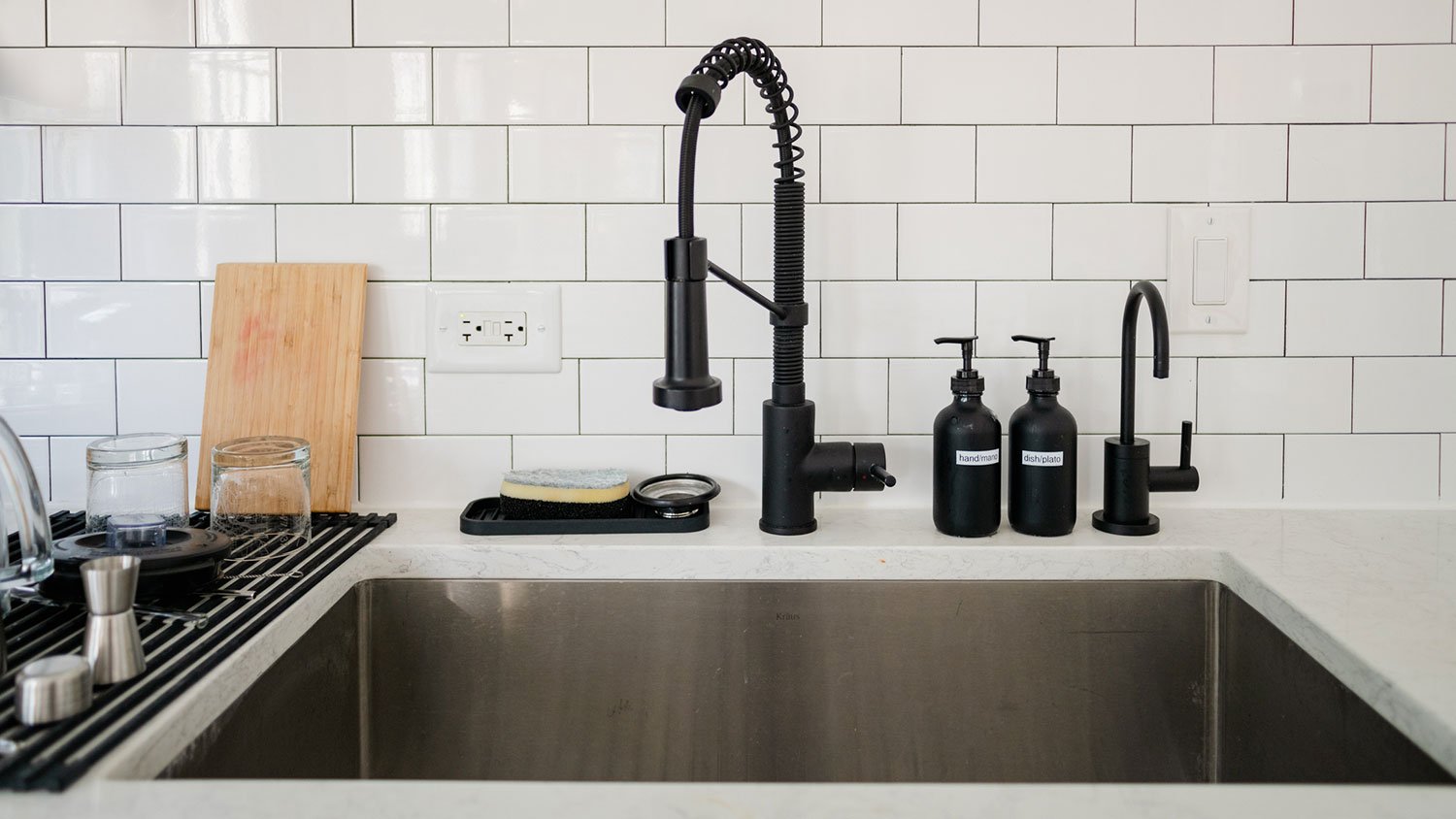
Similar to the pull-out faucet, the pull-down faucet usually has one handle and one nozzle with spray and flow features, making dishwashing by hand a breeze. Pull-down faucets still provide flexibility, but less so than pull-out faucets.
With a pull-down faucet, you’re able to detach the head downward. Since the head only detaches downward, most pull-down faucets have a high arc. Though you should thoughtfully pair any faucet with a suitable type of kitchen sink, it’s especially important to pair a pull-down faucet with a deep sink. Without a deep sink, a pull-down faucet will leave your kitchen counters soaked from lots of splashing.
| Pros | Cons |
|---|---|
| Extended reach for larger sinks | More expensive than basic faucets |
| Versatile spray options | Less flexibility than pull-out |
| Easy to fill pots and clean dishes | Hose may wear out over time |
Best for: Larger sinks, or homeowners who frequently fill pots.
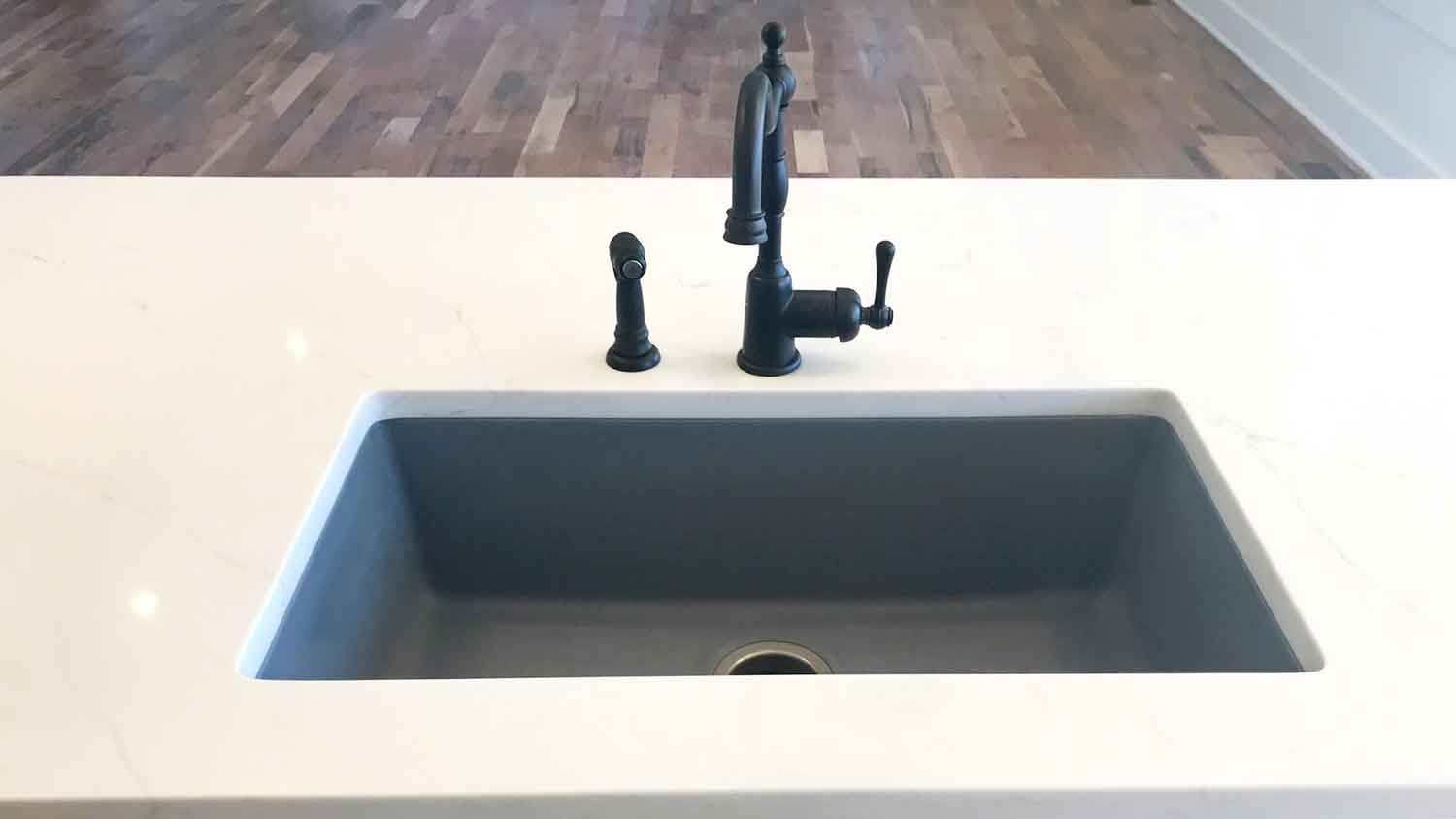
A side sprayer faucet, also called a separate nozzle faucet, incorporates elements from single-handle faucets and pull-out faucets in a unique way. With a side sprayer, the nozzle, as you may have guessed, is separate from the main faucet head.
This type of kitchen faucet often has a lever handle attached at the base of the faucet’s neck, the nozzle head being to the right or the left of the neck. The separate nozzle faucet still supplies users with flexibility with the nearby sprayer. It’s also convenient and easy to use, as you don’t have to worry about any buttons to switch the water flow to a spray—you simply start using the separate nozzle.
| Pros | Cons |
|---|---|
| Separate spray for targeted cleaning | Requires additional hole in the sink |
| Easy to switch between flow and spray | Hose may tangle or get in the way |
| Can be installed with existing faucet | Hose may wear out over time |
Best for: Kitchens with existing faucets but needing an additional spray.
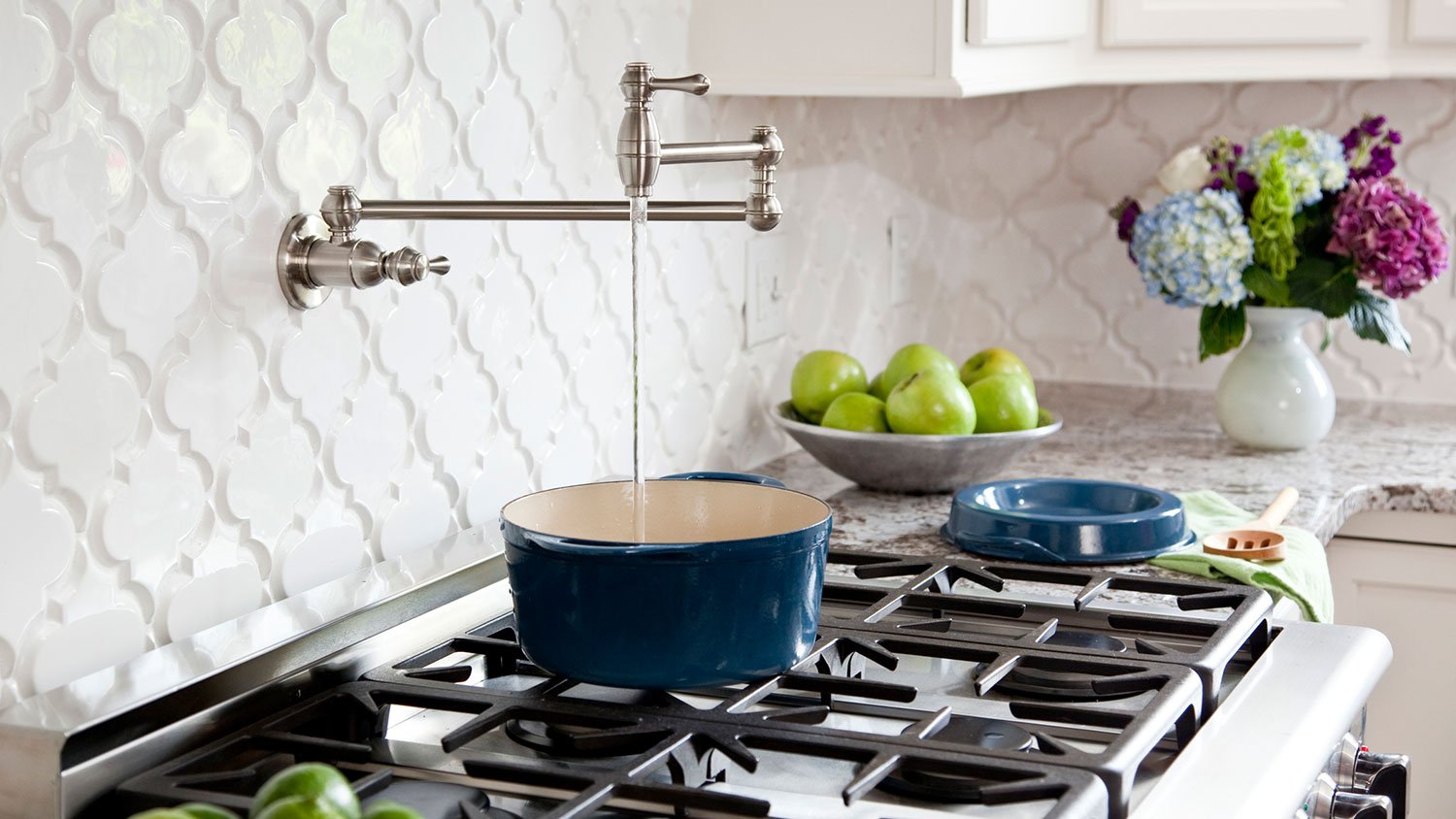
Homeowners who are frequent home cooks may want to consider a pot filler faucet. Pot filler faucets hardly serve as the primary faucet in the kitchen, but they are a huge benefit to at-home cooks who constantly fill up and transfer heavy pots and pans with water from the sink to the stove.
One setback to a pot filler faucet is that its placement sits right over the stove, typically distant from plumbing. You may consider hiring a professional faucet installer near you to install a pot filler faucet to avoid any issues with running water using this appliance.
| Pros | Cons |
|---|---|
| Convenient for filling large pots | May require additional plumbing installation |
| Adds a luxurious and professional look | Limited functionality beyond filling pots |
| Available in various styles and finishes | May get in your way |
Best for: People who frequently cook large meals and need to fill large pots.
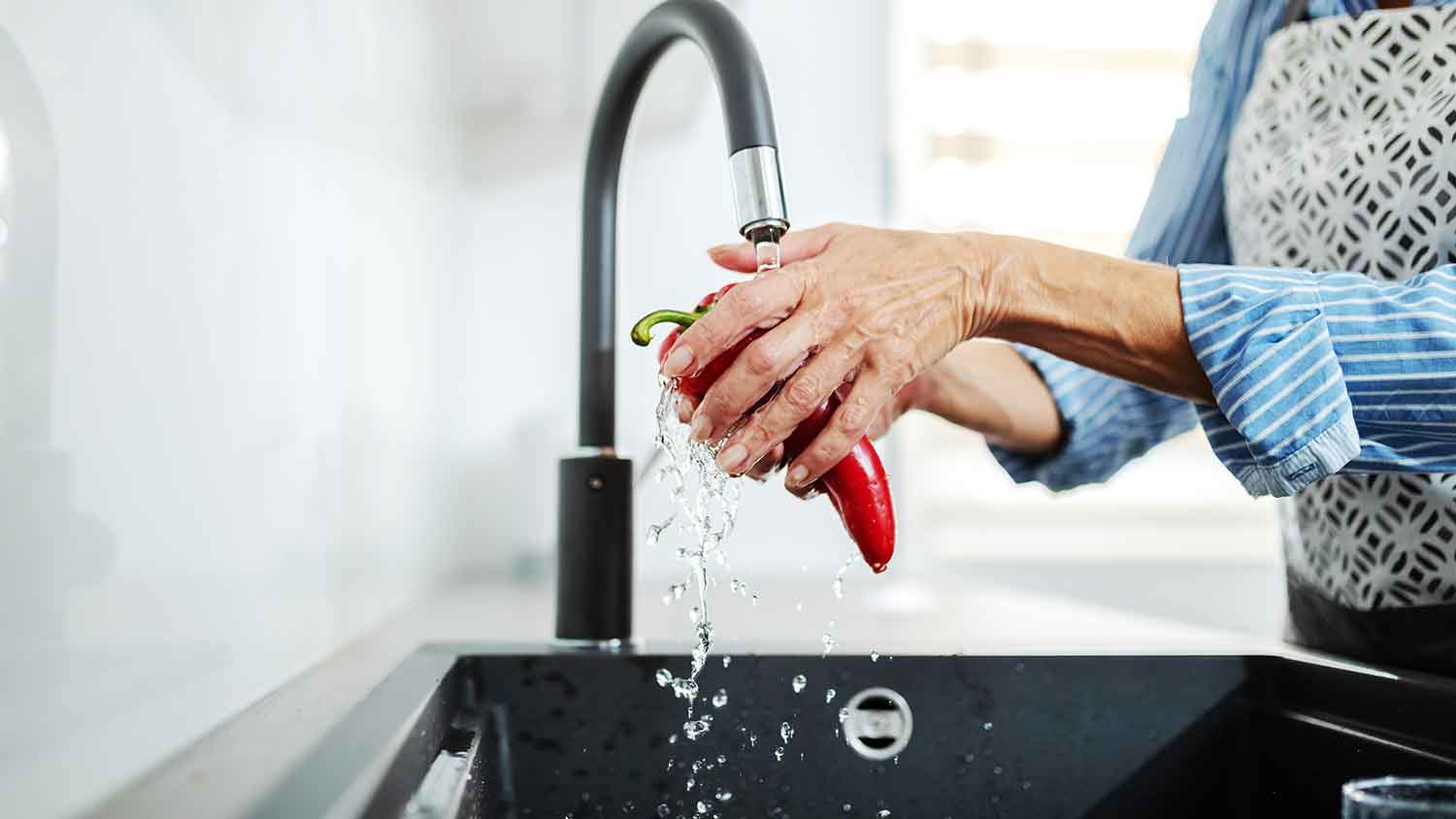
Touchless, or motion-detected, faucets are one of the most sanitary types of kitchen faucets. There’s no need to touch any handle to get water flowing; you simply wave your hand in front of the faucet's motion sensor, often placed at the base of the neck. For this type of faucet’s stand-out trait to work effectively, you must ensure the sensor remains accurate. Any difficulties with the faucet’s sensor could require professional assistance.
| Pros | Cons |
|---|---|
| More hygienic | Potential for sensor inaccuracies or malfunction |
| Automatic shutoff is energy-efficient | More expensive |
| Modern and sleek design | Limited control over water flow and temperature |
Best for: Households with children or elders to reduce the spread of germs, or modern smart homes.
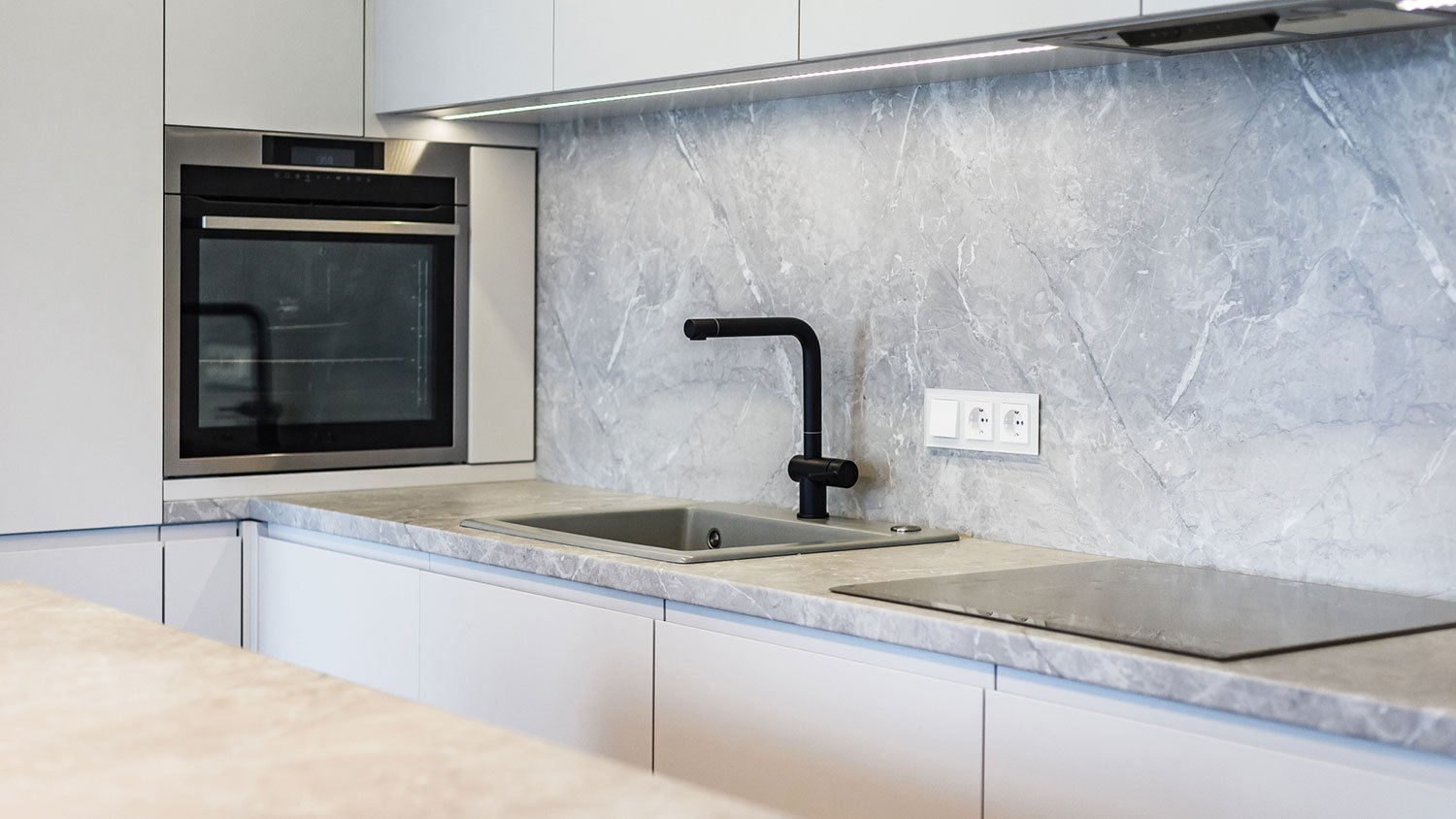
If you’re appreciative of smart gadgets in the home, you’re likely to enjoy all that a smart kitchen faucet has to offer. From your smartphone, you can indicate your desired water temperature, flow, and amount.
Smart faucets can also help you be more eco-friendly, with aspects that monitor your home’s water usage. Closely monitored water use can also help minimize your water bill. Of course, all of these features come at a considerable price in addition to the cost to install your faucet, which is $160 to $360. A smart faucet requires a bigger budget than the other types of kitchen faucets discussed.
| Pros | Cons |
|---|---|
| Customizable settings and presets | Higher initial cost |
| Monitoring water usage can be more eco-friendly | Requires Wi-Fi or Bluetooth connection |
| Minimizes water bill | Potential for software glitches or updates |
Best for: Tech-savvy homeowners and smart homes.
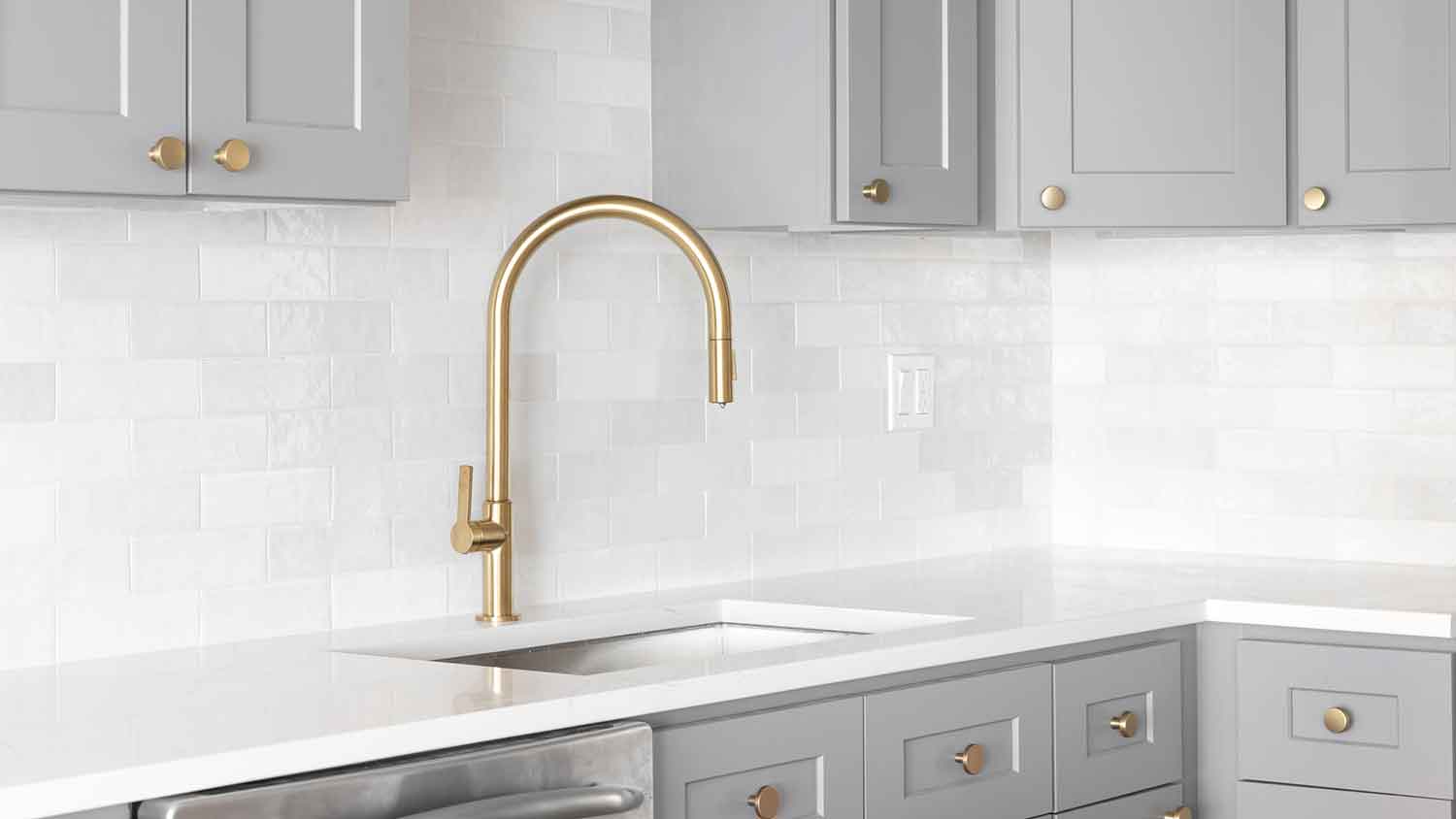
Gooseneck faucets are distinguished by their elevated arc, much like the curve of a goose’s neck. These faucets extend vertically from the sink, arching upward before curving back down the sink. Their tall stature makes them ideal for cleaning large pots and pans. However, this tall design requires an unobstructed space around the sink, as they can run into issues when positioned beneath cabinetry, window sills, and other blockages.
| Pros | Cons |
|---|---|
| High spout provides more under-faucet space | Limited reach compared to pull-down |
| Ideal for filling tall pots and vases | May splash more in shallow sinks |
| Sophisticated design | Requires unobstructed space around the sink |
Best for: Kitchens with deep or farmhouse sinks.
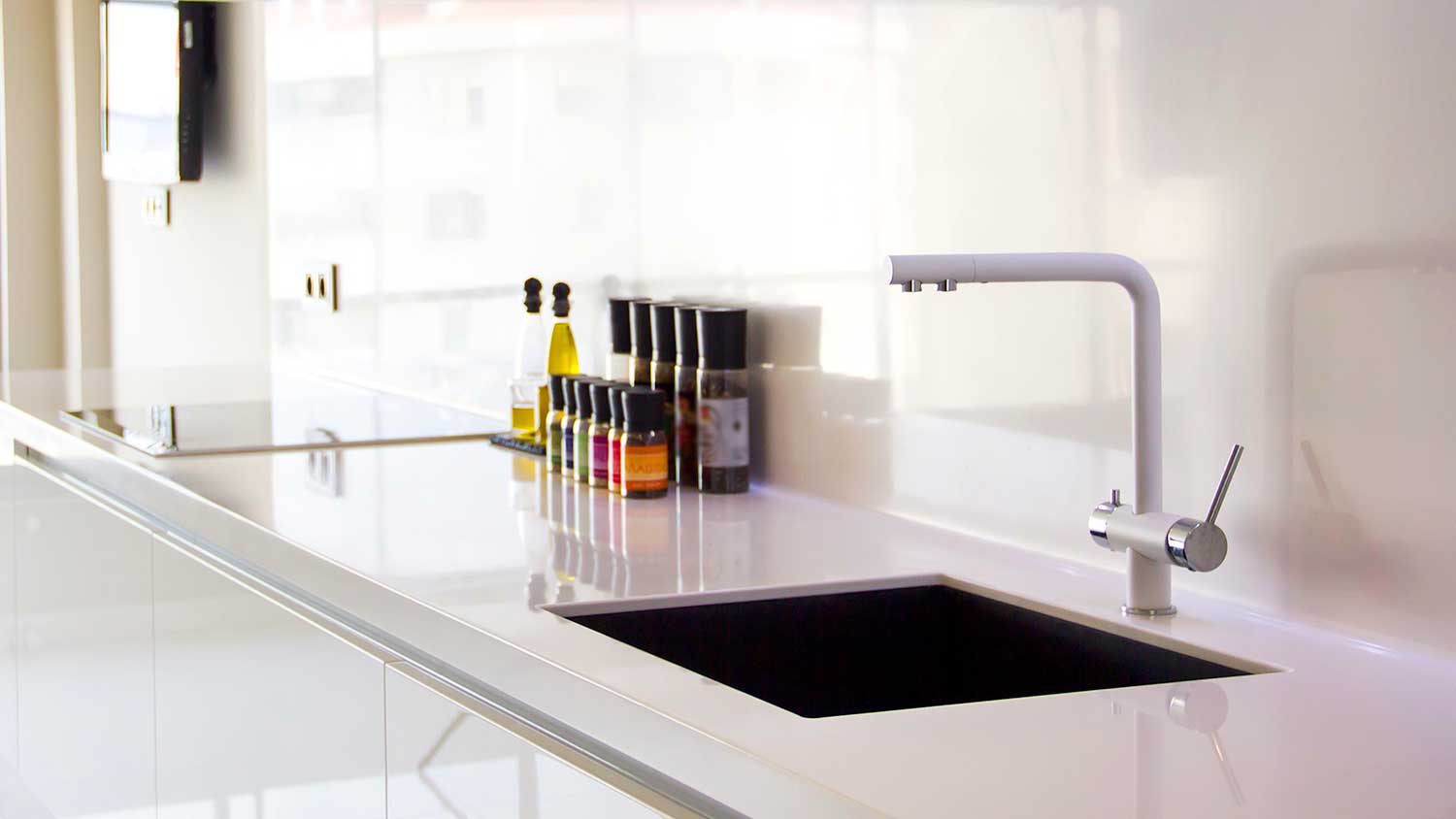
Straight spout faucets are crafted to extend horizontally over the sink in a straight line. They come in various sizes, ensuring compatibility with large and small sinks. Due to their low profile, these faucets are particularly suitable for sinks that have limited vertical clearance, such as those located beneath kitchen cabinetry.
| Pros | Cons |
|---|---|
| Simple and classic design | Limited reach compared to other types |
| Easy to clean with no crevices | May not provide enough clearance for pots |
| Fits well in compact spaces | Limited style options |
Best for: Compact kitchens or budget-conscious homeowners.
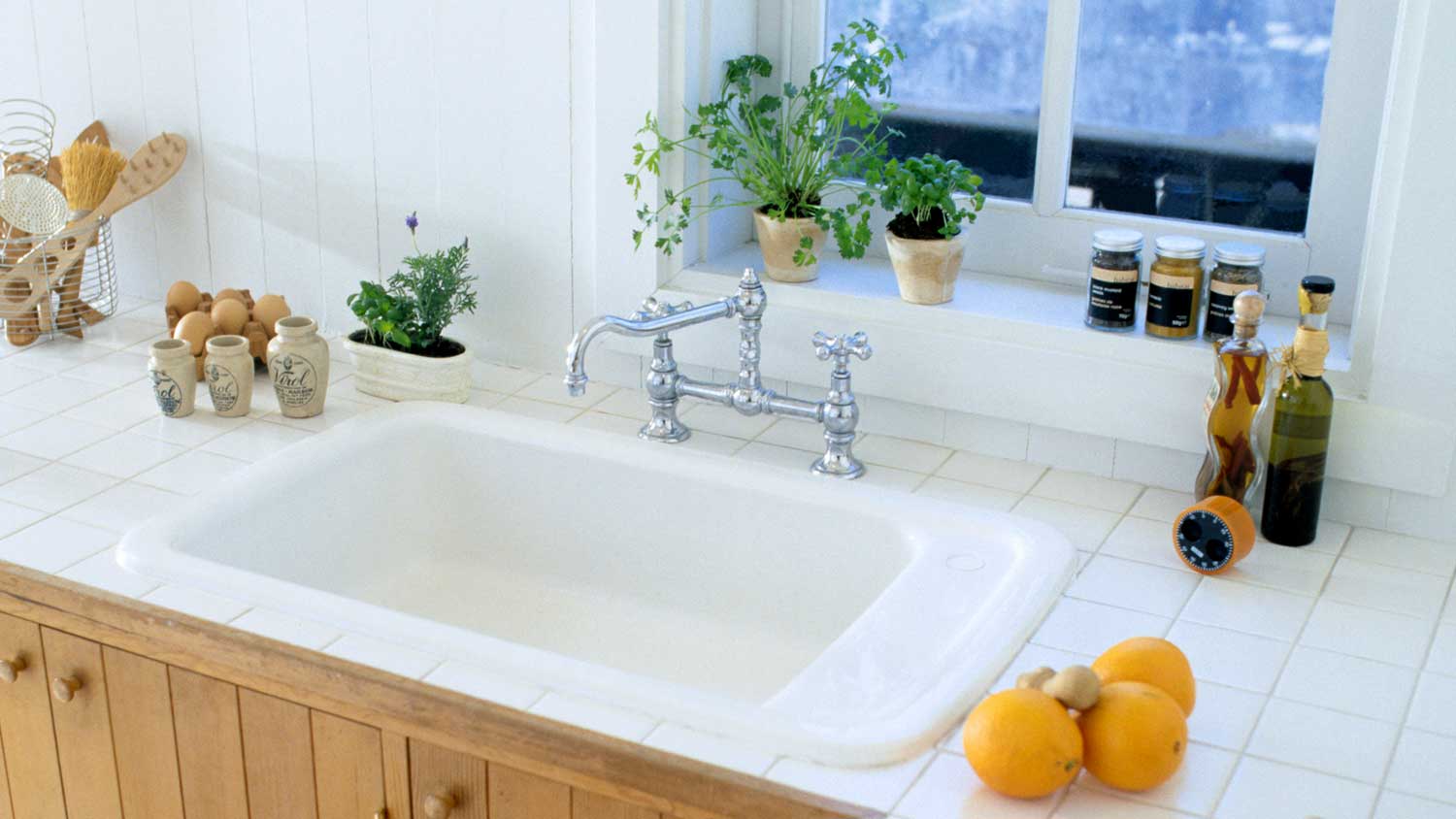
Bridge faucets add a touch of charm to any kitchen. They harken back to classic designs with a modern twist, featuring a high arching spout connected to handles by a “bridge” piece above the sink.
In terms of appearance, the bridge faucet has a vintage appeal that suits classic kitchen designs or those going for a more eclectic look. Its functional benefits stem from having separate hot and cold water handles, as well as an elevated spout for plenty of clearance for filling pots.
| Pros | Cons |
|---|---|
| Elegant and vintage design | Requires additional holes in the sink |
| Precise temperature control | More potential for leaks or dripping |
Best for: Vintage and farmhouse-style kitchens.
You can activate touch-activated faucets by a gentle tap on the faucet spout, while the temperature is conveniently adjusted using a small handle located on the side. With a design akin to touchless faucets, these fixtures contribute to a sleek, uncluttered appearance for kitchen sinks. The ability to activate the water flow with a simple tap makes touch-activated faucets highly efficient and convenient. However, it’s worth noting that touch-activated faucets, much like touchless faucets, typically come with a higher price tag than other faucet styles.
| Pros | Cons |
|---|---|
| More hygienic | Higher initial cost |
| Energy efficient | Requires electrical hookup |
| Convenient for hands-free usage | Potential for sensor malfunction |
Best for: Busy kitchens or “smart” homes.
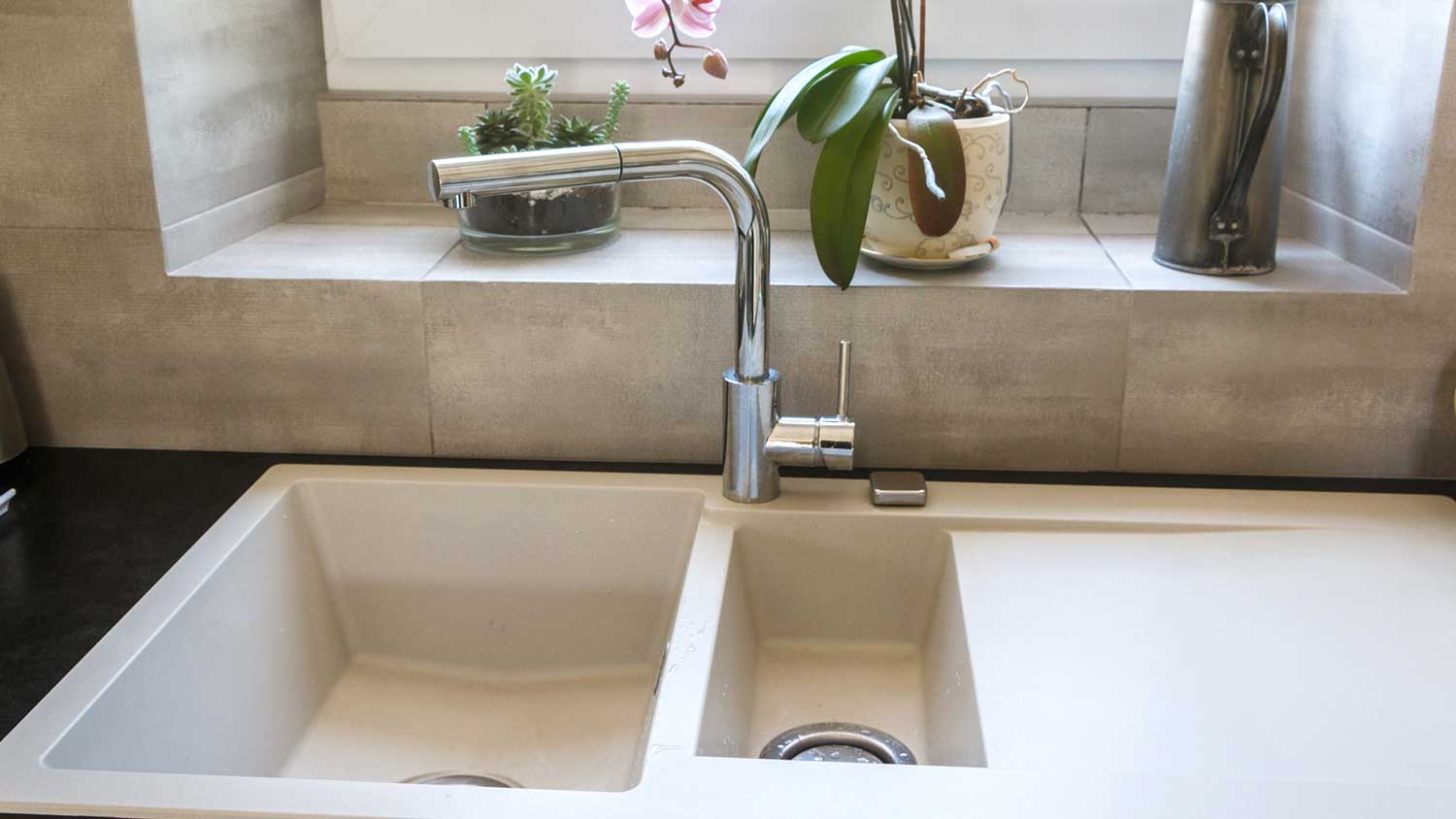
Swivel spout faucets offer the flexibility to rotate back and forth, allowing for easy adjustment of the water flow direction. This convenient feature is particularly advantageous for wide or double sink basins, as you can maneuver the swivel spout to either basin based on specific needs or preferences.
| Pros | Cons |
|---|---|
| Increased flexibility and reach | May splash more in shallow sinks |
| Convenient for multitasking | Limited styles |
| Ideal for multiple sink basins | Hose may wear out over time |
Best for: Kitchens with multiple or wide sinks.
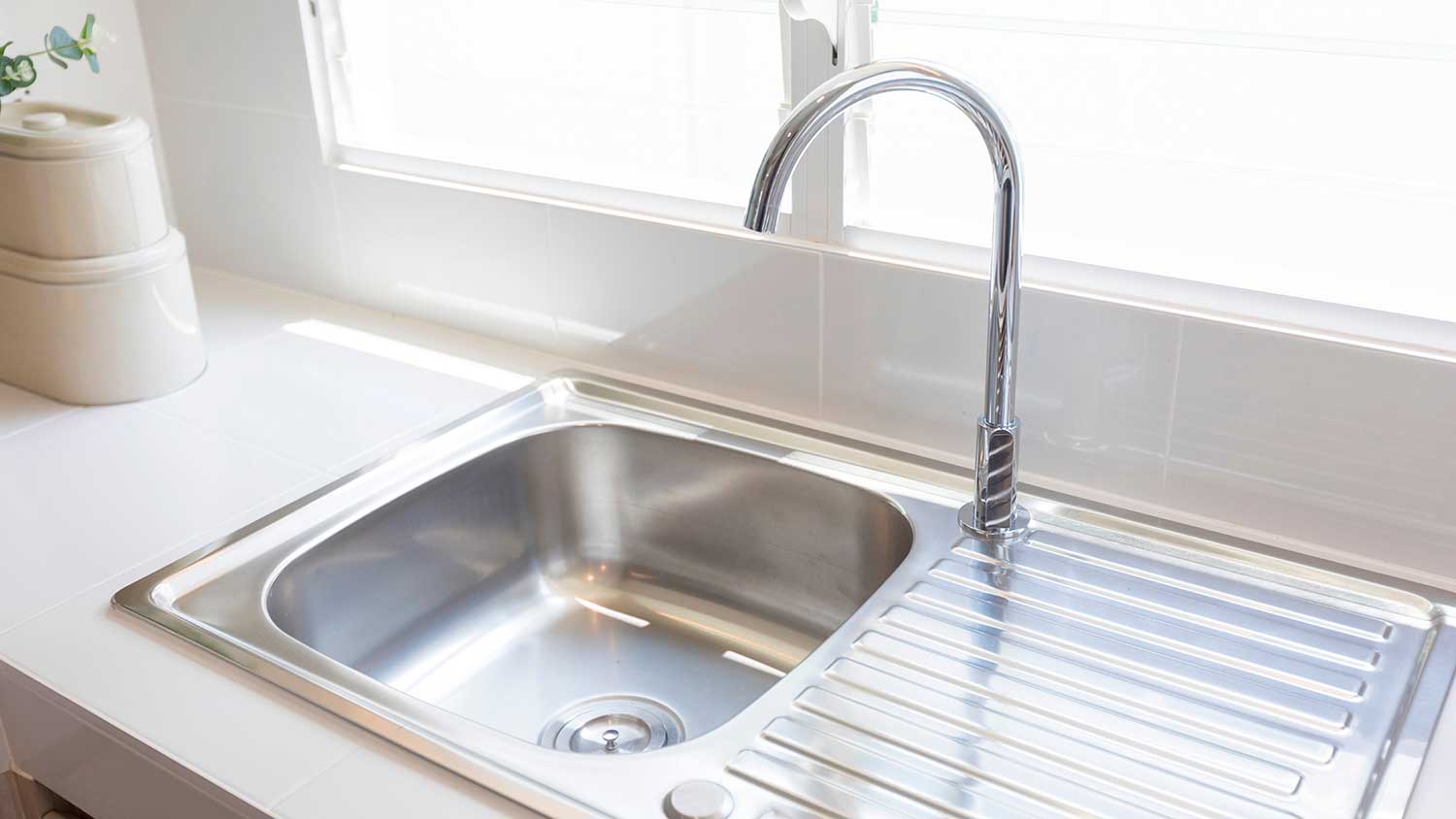
When simplicity is key, stationary faucets are ideal. Stationary faucets have a straightforward and classic design with a single spout that doesn’t move or swivel. While they don’t have the advanced features of other faucet types, these faucets offer durability and low maintenance. They’re easy to install and operate, making them a more practical and budget-friendly option.
| Pros | Cons |
|---|---|
| Simple and straightforward design | Limited functions compared to others |
| Affordable and easy to install | May not provide enough space for pots |
| Suitable for basic kitchen setups | Limited style options |
Best for: Simple kitchen setups, or budget-conscious homeowners.
Finding the perfect kitchen faucet isn’t just about functionality. It also adds a touch of personality and style to your home. You’ll want to consider a few factors to ensure that the faucet fits both your kitchen setup and your design vision:
Sink Compatibility: Determine if your sink has pre-drilled holes and the configuration to match certain faucet types.
Spray Options: If you prefer a spray option, you’ll want a faucet that includes a spray nozzle.
Handles: Having separate hot and cold water handles allows for more temperature control, while a single handle offers more straightforward functionality.
Height and Reach: The reach of the faucet spout can vary by type. If you frequently cook with large pots, you may want a higher spout to ensure it provides adequate clearance.
Finish: Consider a finish that complements your kitchen’s style, such as chrome, stainless steel, or matte black.
Budget: Set a budget range, accounting for the initial cost and long-term maintenance. Certain faucets, like touchless faucets, may cost more initially but save on water bills in the long run.
Once you’ve picked out a faucet, you’ll have to decide whether to install it yourself or hire a pro. Some faucets are simpler to install and can be DIY-ed if you’re comfortable with handling some basic plumbing, especially if you’re replacing a standard faucet with a similar model.
A few situations in which it might be best to hire a professional are:
Your kitchen has a more complex plumbing layout with non-standard connections, such as needing plumbing over a stovetop.
You’re installing a specialty faucet, like a smart faucet, that requires electrical connections and additional components.
The faucet has an integrated water filtration system.
Your kitchen’s plumbing is old or in poor condition, potentially causing leaks or complications during faucet replacement.
If you’re unsure or prefer professional installation, you can hire a licensed local plumber to handle it smoothly and avoid potential issues.
Alison Kasch contributed to this piece.
From average costs to expert advice, get all the answers you need to get your job done.

Building a guest house is one of the largest home projects and involves several different professionals. Learn about the cost to build a guest house and where you can save.

Accessory dwelling units can be a smart investment, but your ADU cost will depend on the size, type, and materials you choose. Here’s how it breaks down.

Remodeling your bathroom can add significant value to your home. Your bathroom remodel cost will depend on size, fixtures, materials, labor, and other factors.

An updated bathtub can give a bathroom a whole new look. Find out how much it costs to replace a bathtub in Columbus, OH, including prices by type and labor costs.

DIY sink installation is a doozy but do-able for those with experience. Use this guide to learn how to install a bathroom sink in a few steps.

An updated bathtub can give a bathroom a whole new look. Find out how much it costs to replace a bathtub in Orlando, FL, including prices by type and labor costs.